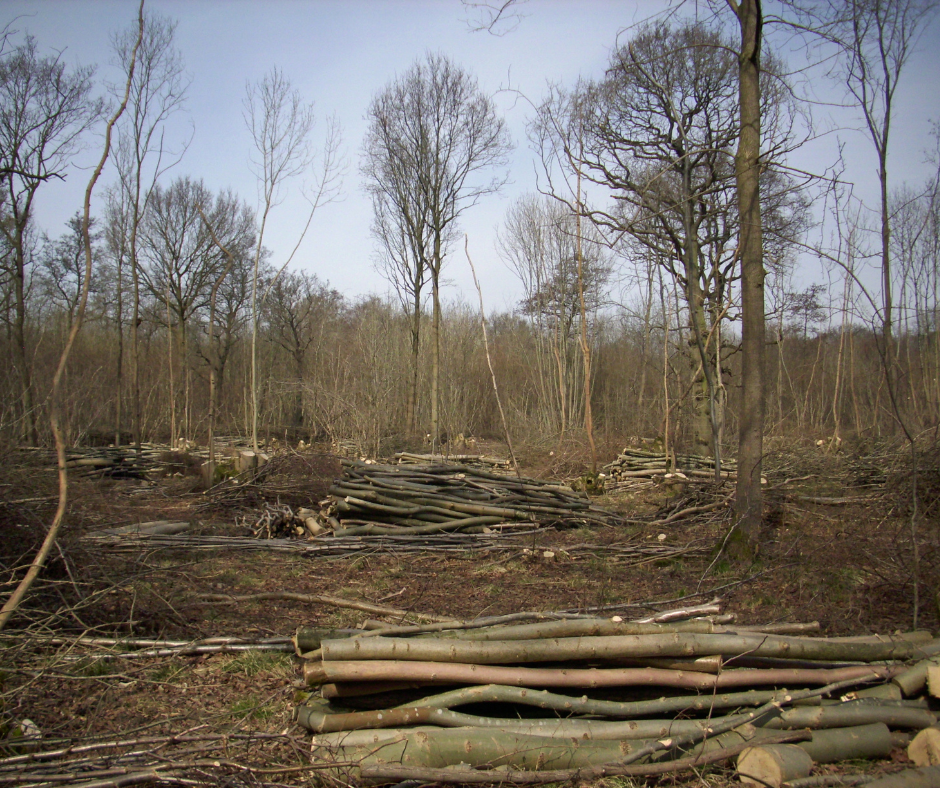

Six Sustainable Designers Who Support Local Economies, Preserve Cultural Heritage, & More
Summary
Reflection Questions
Journal Prompt
In both our personal and professional lives, we are all grappling with the consequences of overconsumption. Historically reliant upon international supply chains, finite resources, and unfair labor practices, the design industry is no different. However, many designers and craftspeople have rejected harmful practices—choosing instead to develop their own socially and environmentally responsible approaches to design. In this article, we celebrate six sustainable designers who support local economies, preserve cultural heritage, and honor the natural world. From Sebastian Cox’s support of forest coppicing in the UK to Fernando Laposse’s use of indigenous Mexican plant fibers, each sustainable approach outlined in this article is incredibly inspiring. Read on to learn more!
Six Sustainable Designers Who Inspire Us at DesignDash
#1 Sebastian Cox is Committed to Sustainable Sourcing and Minimal Waste


British furniture designer Sebastian Cox marries traditional craftsmanship with innovative technologies that cut emissions, minimize waste, and efficiently utilize sourced material. His approach is one that our culture of consumption sorely needs.
At the core of Cox’s work is his use of local, sustainably managed wood, which is harvested through “coppicing.” By sourcing from coppiced woodlands in the UK, Cox can craft furniture from renewable resources while promoting the enduring health and biodiversity of these ecosystems. Local sourcing also reduces emissions released by transporting heavy loads of lumber long distances.
For those unfamiliar, coppicing is a traditional woodland management method whereby trees are periodically cut back to stimulate new growth. According to this resource from The National Trust, coppicing actually dates back to the Stone Age. That harvest provides a continuous supply of timber to furniture makers and other industries without depleting the forest.
When Cox crafts furniture from this sustainable harvested timber, he prioritizes resource efficiency as well. The designer’s production process uses every part of the timber—incorporating common byproducts instead of tossing them out.
Visit Sebastian Cox’s showroom in Margate, Kent, UK or learn more about the studio here.
#2 Ilse Crawford and Studioilse Embody a Systems-Focused Design Ethos
Ilse Crawford’s commitment to sustainability and wellbeing runs deep. Nearly a decade ago, Ilse Crawford designed a furniture line crafted from natural materials like cork and bamboo for IKEA—long before COVID-19 revealed the paramount importance of healthy, human-centric indoor spaces. Plus, Crawford both created and headed the Design Academy Eindhoven’s Department of Man and Wellbeing for twenty years.
At Studioilse, Crawford and her team use natural, locally sourced materials that have a lower environmental impact in product design, architecture, interiors, and more. However, the studio’s values go far beyond eco-friendliness.
On Studioilse’s site, Crawford notes that “design that can help us be better humans by always designing for positive mental and environmental impact.” This systems-focused approach to design is what truly sets Studioilse apart. Crawford understands and prioritizes the relationship between humankind and its environment when creating spaces for her clients.
#3 Piet Hein Eek’s Trash Heap Becomes Tactile Art and Functional Furniture
By using materials that would otherwise end up in landfills, Dutch designer Piet Hein Eek contributes to a circular economy, where resources are continuously reused and repurposed. Whether they are crafted from lacquered scrap wood and salvaged piping or made with discarded timber and waste tile, Piet Hein Eek’s pieces are beloved for their elevated use of repurposed materials.
Other materials found in Eek’s furniture include recycled army tents, archival glass, and metal framed doors. His studio also participates in the secondary sales market—curating and offering everything from vintage director’s chairs to antique Dutch cabinetry.
Using repurposed materials means that each piece is wholly unique: the finish and color of one will always differ from the next. Many of Piet Hein Eek’s pieces are as much fine art as they are functional objects. Since 2015, he has exhibited with The Future Perfect in Los Angeles, Miami, and New York.
The artist and designer’s most recent exhibition with The Future Perfect—”CASA PERFECT LOS ANGELES 3.0”—straddled pre-COVID times and the first months of this global event. Bold, colorful, and chaotic, it was the perfect show to support a growing trend toward more personalized, thoughtful, and sustainable interiors.
#4 Antonia Caicedo of JIMECO Turns Meat Industry Byproducts Into Luxury Furniture and Casegoods


A family-owned company founded in 1975, JIMECO produces high-quality pieces that stand the test of time—limiting the need for frequent replacements and minimizing waste in the furniture industry. They source their materials responsibly—often working with local suppliers to cut the environmental impact of each piece. With more than 50 years supporting artisans in Colombia and the US, JIMECO sources materials responsibly while prioritizing social sustainability by preserving traditional craftsmanship.
One of the most interesting facets of JIMECO Design Director Antonia Caicedo’s new Antonia en Bleu collection is its application and elevation of goatskin—a byproduct of the meat industry in Colombia. By repurposing goatskin as parchment, her collection not only reduces waste that would otherwise end up in landfills but also adds value to a material that would typically be discarded.
Fuel your creative fire & be a part of a supportive community that values how you love to live.
subscribe to our newsletter
*please check your Spam folder for the latest DesignDash Magazine issue immediately after subscription


This approach reduces the environmental impact of JIMECO’s production processes and promotes a circular economy in which resources are reused and repurposed. Incorporating goatskin in her designs also supports the meat industry by providing an additional revenue stream from what would otherwise be waste.
Learn more about the Art Deco, Mid-Century, and Post-Modernism-inspired Antonia en Bleu collection here.
#5 Stephanie Beamer, Crystal Ellis, and Hillary Petrie of Egg Collective See Creation as a Social and Environmental Responsibility
With backgrounds in woodworking, art, and architecture, Stephanie Beamer, Crystal Ellis, and Hillary Petrie founded NYC-based Egg Collective back in 2011 with sustainability in mind. Philosophically, the studio sees creation as a social and environmental responsibility: the thoughtful use of materials, respectful collaboration with suppliers, the soul of each individual object. Petri, Ellis, and Beamer select hard-wearing, sustainably sourced materials for pieces created in their studio—ensuring all pieces will last for decades while developing their own patinas.
In addition to their ongoing commitment to sustainable design, quality craftsmanship, and small-batch sourcing, Egg Collective’s founders are fighting for women’s representation in the industry. They do so by realizing the unfinished and unproduced work of incredible female architects who did not receive the recognition they deserved during their own lifetimes—beginning with Eileen Gray’s “House for Two Sculptors.” As Kat Barandy writes in a feature for designboom, the three architectural designers “have created a series of visualizations that allow viewers to step inside the imagined house and experience Gray’s vision firsthand.” This project was exhibited last month during NYCxDesign.
Their Designing Women: Mothers exhibition in 2021 honored female creatives who navigate artistry alongside parenthood in complex ways that are rarely expected of fathers. Directed by Egg Collective and Tealia Ellis Ritter—who herself is an artist and parent—the exhibition not only celebrated the adaptability and unique voices of these mothers but also advocated for their representation and respect in the workplace.
Learn more about Egg Collective and its powerful female founders here.
#6 Fernando Laposse Uses Unexpected Plant Fibers in Innovative Ways Alongside Indigenous Communities
The Mexican designer describes his practice as “material-driven,” and this focus could not be more evident in the furniture that Laposse produces. Fernando Laposse’s innovative use of plant fibers that grow in the South American country is one way that the designer demonstrates his commitment to sustainability. Plant fibers used by Laposse in furniture and installations include heirloom corn husk, avocado, agave sisal, and loofah.
By transforming these often-overlooked materials into striking pieces, Laposse reduces waste, relies on renewable resources, and revitalizes an incredible craft. To do so, Laposse develops brand-new techniques—an approach that sets him apart from others on this list. Instead of relying on historical methods, Laposse and his team engineer innovative ways of working with these materials before transmitting that knowledge to local craftspeople who can execute them.
His approach not only minimizes environmental impact but also offers hope for a more sustainable future. The natural fibers used in his furniture are biodegradable and eco-friendly, and by sourcing these materials locally and teaching community members new skills, Laposse revitalizes the market for indigenous plants, creates jobs, and empowers artisans. The Tonahuixtla are one such community that benefit from collaboration with Laposse and his studio.
Learn more about Fernando Laposse’s studio and his work in social sustainability here.
Final Thoughts on Sustainable Design
In closing, we encourage you to learn more about the philosophies and work of Sebastian Cox, Ilse Crawford, Piet Hein Eek, Antonia Caicedo, Stephanie Beamer, Crystal Ellis, Hillary Petrie, and Fernando Laposse. They are models of how sustainable practices can be integrated into design without compromising the artist’s vision or the material’s unique characteristics.
We hope you will explore their work, engage with their stories, and share information about other sustainable designers you admire in the comments below. We must all continue to advocate for a design industry that champions both social and environmental sustainability. Together, we can foster a more equitable and eco-conscious future for all.
By Elizabeth Burton-Marin.








